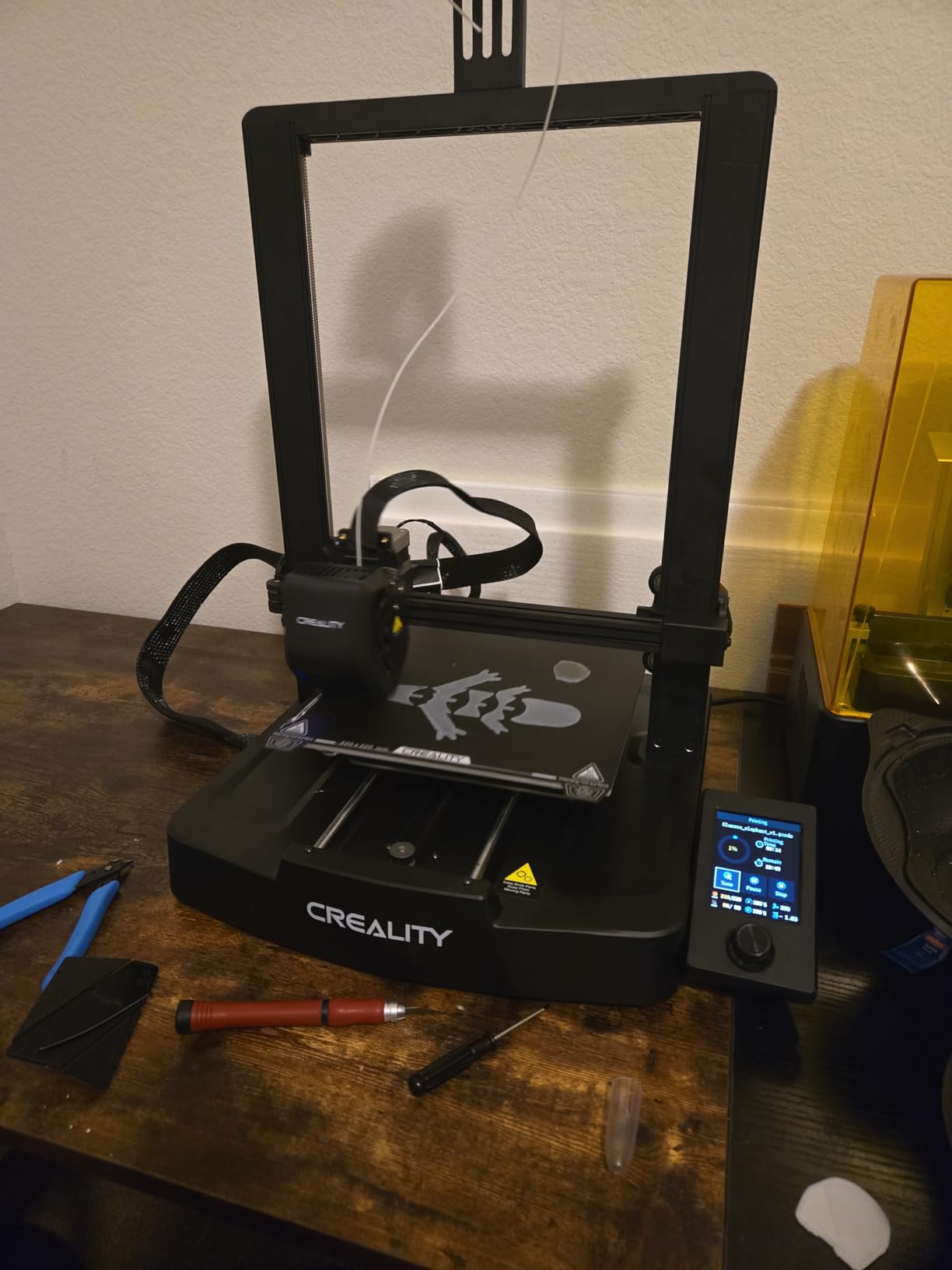Creality Ender-3 V3 SE Analysis 2025: The Ultimate Budget-Friendly 3D Printer for Beginners?
By: Wajahat Ahmed Zia | Software Engineer & Lead Analyst
The Creality Ender-3 V3 SE has quickly become a standout in the entry-level 3D printer market, lauded for its impressive features at an incredibly affordable price. Designed with new 3D printing enthusiasts in mind, it aims to simplify the often-intimidating world of additive manufacturing. But does it truly deliver a hassle-free experience, or are there hidden compromises?
Our analysis evaluates the V3 SE as a Masterpiece of Usability Engineering, judging how its automated features and robust mechanics stack up against the technical limitations of its budget class.

Design Thesis: Automation, Stability, and Low Barrier to Entry:
The V3 SE succeeds by prioritizing Effortless Assembly and Automated Calibration. The inclusion of CR Touch auto-leveling combined with the strain sensor for auto Z-offset completely automates the often-frustrating first-layer adhesion process. This single feature dramatically lowers the barrier to entry for beginners and ensures reliable printing from the start.
Mechanical Reliability: The printer’s performance is anchored by its Robust and Stable Build—specifically the dual Z-axis design and dual Y-axis linear shafts. This improved motion system reduces mechanical artifacts like "Z wobbling," directly contributing to Excellent Print Quality for the Price and stability during high-speed moves.
Extrusion Excellence: The use of the "Sprite" Direct Drive Extruder is a crucial technical upgrade over older Bowden systems. Direct drive provides superior control over filament flow, which is mandatory for successfully printing complex materials like flexible TPU, and simplifies both loading and unloading of material. This enhanced control, combined with Increased Print Speeds (up to 250mm/s), makes the V3 SE a technically advanced budget platform.

The Trade-Offs: Usability Gaps and Customization Limits:
To maintain its attractive budget price point, the V3 SE accepts several key compromises related to user convenience and technical openness:
Connectivity and Automation Gaps: The most noticeable omission is the No Wi-Fi Connectivity. This is a budget-driven inconvenience that forces users to rely on older transfer methods (microSD/USB-C) for file transfer, restricting remote operation. Furthermore, the lack of a dedicated Filament Run-out Sensor means large prints are vulnerable to failure if the spool empties mid-job.
Surface and Slicer Tuning: While excellent, the PC-coated build plate is known to Degrade over time, sometimes requiring glue or adhesive for consistent adhesion—a minor maintenance requirement common in this price bracket. Similarly, the Occasional Stringing is not a hardware defect but a requirement for the user to fine-tune temperature or retraction settings in the slicing software.
Design Philosophy Shift: Compared to the moddability of its predecessors, the V3 SE has Limited Moddability. This is a deliberate trade-off where Creality prioritized a stable, streamlined, out-of-the-box experience over the open-ended tinkering preferred by advanced users.

Users Consensus:
The Creality Ender-3 V3 SE is a popular choice among beginners, celebrated for its quick and easy setup, enabling users to start printing in under 30 minutes. Its automatic bed leveling feature significantly reduces the common frustrations of 3D printing, ensuring a seamless first layer. Many users commend its sturdy aluminum frame, which contributes to stable, high-quality prints, whether for intricate details or larger projects. The Sprite Hotend with auto-loading and unloading enhances functionality, while the quiet operation makes it suitable for home use. Additionally, the printer comes with essential accessories, offering great value for those new to the hobby.
However, the Ender-3 V3 SE is not without its issues. Some users report reliability problems and quality control concerns, including hardware failures shortly after purchase, overheating, and software bugs in the provided Creality Print program that hinder setup. Customer service has also drawn criticism for being unresponsive, often redirecting users to retailers without offering effective solutions. Other drawbacks include missing parts, loose screws, and a less-than-intuitive interface. While many have had positive experiences, potential buyers should weigh these common criticisms before making a decision.
Click below to check out current price on Amazon.
Creality Ender-3 V3 SE 3D Printers with Sprite Direct Extruder
Creality Ender 3 V3 SE 3D Printer Auto Filament Loading Ender 3D Printer
Creality Ender-3 V3 SE 3D Printers with Sprite Direct Extruder
Click here to read about other 3D Printers that I have analysed.
FAQ:
Q: How easy is the Creality Ender-3 V3 SE to set up for a beginner?
A: The Creality Ender-3 V3 SE is highly regarded for its easy setup, making it a great choice for beginners in 3D printing. Much of the printer comes pre-assembled, allowing users to have it operational in as little as 10 to 20 minutes, with some even completing their first test print the same day. The inclusion of an automatic bed leveling system (CR Touch) simplifies this crucial process, reducing initial setup frustration. Its 3.2-inch color knob screen provides an intuitive interface that guides users through setup and printing. The "Sprite" direct drive extruder enhances print quality and simplifies filament management with just a tap to "Extrude" or "Retract."
Additionally, the printer comes with all necessary tools and a detailed manual, often including an SD card with video guides. For US customers, the easily marked voltage switch streamlines setup further. In essence, the Ender-3 V3 SE is designed for a hassle-free experience, enabling beginners to focus on creating rather than complex assembly or calibration.
Q: Is the Creality Ender-3 V3 SE noisy during operation?
A: The Creality Ender-3 V3 SE is generally quieter than older budget printers, thanks to silent stepper motor drivers, though user experiences with noise levels can vary. Many reviews highlight it as "noticeably silent," but the main noise often comes from the fans, which can produce loud sounds reminiscent of a "blender" or a "90s desktop computer," especially during longer or faster prints. Individual variations in units can lead to differing levels of noise, including potential grinding from the linear motion system. To mitigate noise, some users opt for quieter fan replacements or custom modifications, and ensuring a stable setup can also help reduce vibrations. Overall, while not the quietest printer available, the fan noise might be noticeable for those sensitive to sound.
